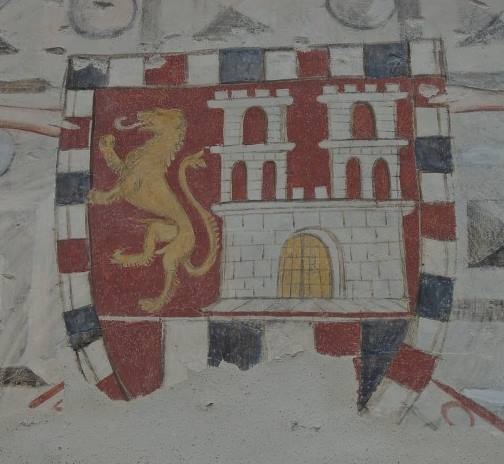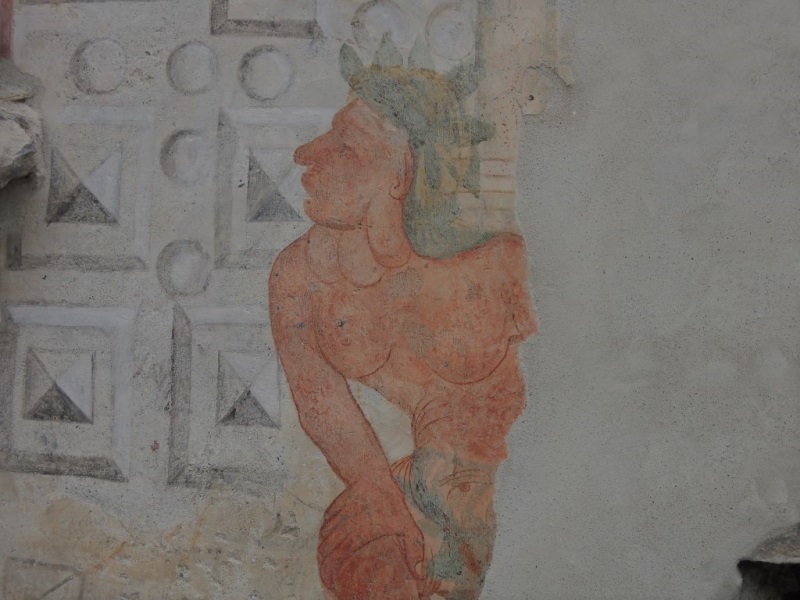by Giorgio Baruta
The formal aspects and the materials analysed during the conservative restoration allow us to date the painting to between the end of the 15th and beginning of the 16th century.
The heraldic coat of arms of the Andriani family emerges from the centre of the figurative and ornamental composition.
The strong colours stand out against the rest of the work.
 Detail of the Andriani coat of arms
Detail of the Andriani coat of arms
The coat of arms is held by two cupids resting on two columns with a leafy capital.
The columns are supported by two telamons painted in a three-quarter profile.
Only a tiny scrap of painting remains of the one on the right.
The monochrome background consists of diamond-shaped ashlar, punctuated at intervals with spheres.
The plaster was evenly laid and pressed with a metal blade.
No incisions can be seen on the plaster to make the design and the outlines of the figures were drawn with a thin, red brush-stroke.
The painter then put a fresh layer of verditer, a blue-green pigment, on top of which he painted calligraphic strokes of red and white to create the composition.
This technique had mediaeval origins and continued to be used to paint plaster up to the early decades of the sixteenth century.
The pigments used are of mineral origin: yellow and red ochre, red and green clay, with the exception of black, obtained from burning wood.
White was simply lime, whereas the blue in the chessboard of the coat of arms shows traces of azurite on the bottom of the preparatory canvas.
 Detail of the figure of Telamon
Detail of the figure of Telamon
The conservative restoration has made the painting legible, yet has kept the marks of the diificult events which hid it for several centuries.
The shades have reappeared in all their true colour and above all the technical skill of the painter can be seen in his portrayal of different shades using the limited palette available.
The diamond-shaped background enhances the composition.
However, this is not merely a decorative expedient.
On the contrary, if we observe carefully from a distance, we can catch the intention to depict a curtain based on the models of wall coverings of courtly architecture. This further reinforces the intention of the purchaser to show the position of power reached by means of a figurative expression.